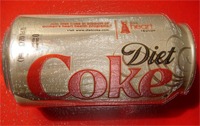The Heart Truth of Social Marketing
Posted At: November 23, 2010 5:38 PM
by Paige Niewerth
 Raising awareness for a nonprofit organization is a difficult process; if done correctly, it can positively influence a successful campaign. Social marketing has a strong effect on the overall objective of a campaign and is a strategy many public relations practitioners employ.
Raising awareness for a nonprofit organization is a difficult process; if done correctly, it can positively influence a successful campaign. Social marketing has a strong effect on the overall objective of a campaign and is a strategy many public relations practitioners employ.
Within the PR world, social marketing includes the product, place, price and promotion. In simpler terms, social marketing’s main focus is promotion of an idea, not necessarily sales of a product, which is the goal of traditional marketing strategies.
Since its creation in the 1970s, the social marketing discipline has developed and adapted to reflect changes in technology. Today, various social media are widely used for social marketing. Capable of reaching a large amount of people several times a day, Twitter, Facebook and YouTube are popular tools in the social marketing aspect of successful campaigns. These media are easy, quick tools for spreading a message inexpensively and for keeping an issue at the forefront of people’s minds.
The Heart Truth
The Heart Truth Campaign is a great example of a successful social marketing campaign. The National Heart, Lung and Blood Institute (NHLBI) hired Ogilvy & Mather, an international advertising, marketing and public relations agency, to raise awareness and spread a key message: more women die of heart disease than any other disease. Ogilvy’s tagline for the campaign is “Heart disease doesn’t care what you wear – it’s the #1 killer of women.”
Taylor Lander, marketing and sales associate for CityVision Inc., has worked with nonprofits such as the Alabama-Mississippi Chapter of National Multiple Sclerosis Society and the Alabama Chapter of Cystic Fibrosis Foundation. Lander said, “Making sure you are pitching your message correctly and giving it a hook that is newsworthy and appealing to your audience will make a successful campaign.”
Ogilvy used a red dress as the central image of The Heart Truth campaign. The campaign branded the dress to adopt a new social marketing approach. As a part of this new approach, Ogilvy hosted a Red Dress Collection 2010 Fashion Show that became a countrywide campaign.
During the The Heart Truth campaign and fashion show, many companies represented the cause and helped the campaign raise awareness. Corporate participants included Diet Coke, Swarovski, Tylenol, Aspirin and Bobbi Brown cosmetics. In support of the cause, high-end retailers donated dresses to the fashion show event.
One of Ogilvy’s more recognizable products in support of The Heart Truth campaign is Diet Coke, which supported the campaign by placing the signature red dress on cans. In total, 2.65 billion product packages featured the image, reaching audiences through national and local media coverage, television and radio public service announcements, airport dioramas and magazine ads.
“Having good product placement and choosing brands that are widely used by the general public are important,” said Lander. “You hit a large audience when advertising on recognizable products.”
Awareness of this campaign, with the help of Ogilvy, increased from 34 percent to 57 percent since its initial launch in 1999. Within those 11 years, the campaign reached millions of women through advertising, in-store promotions, events and product packaging.
Support
Women’s heart disease is becoming recognized through sorority philanthropies.Alpha Phi Foundation, which focuses on women’s heart health, has been Alpha Phi sorority’s philanthropy since 1956. Realizing heart disease is the number one killer of women in America, Alpha Phi Foundation focuses on funding research, educational programs and providing grants to improve women’s heart health.
Each year, Alpha Phi’s Red Dress Gala raises money in support of cardiac health. More than 75 percent of Alpha Phi chapters in the past year hosted Red Dress events. In support of the Alpha Phi Foundation, the events raised nearly $1 million.
“As the Red Dress events continue to gain momentum within our chapters, on their campuses and within their communities, our members pride themselves on the authentic effort and heightened philanthropic awareness we share as members of Alpha Phi,” said Ann Carstensen, executive director of Alpha Phi Foundation.
Raising awareness in the community, advertising through proper media and finding adequate funding are tactics every PR agency has to remember in order to successfully run a social marketing campaign. Campaigns have the ability to team up with and affect other organizations and can spread additional awareness, becoming a nationwide movement.
What other social marketing campaigns have you recognized as successful?


